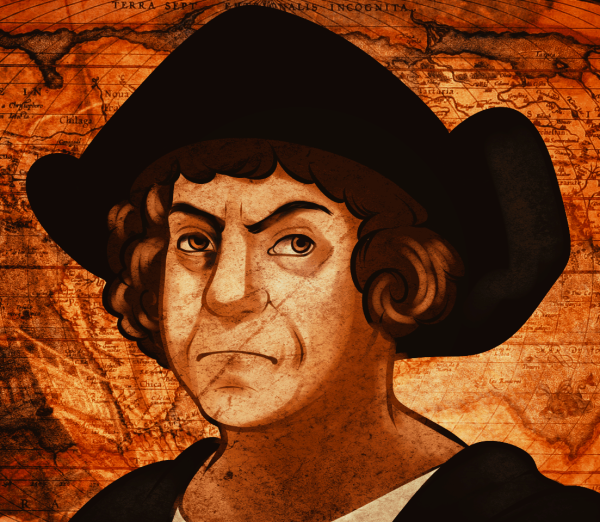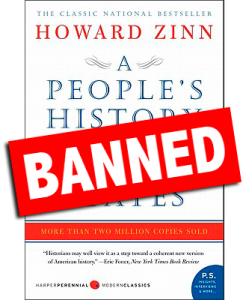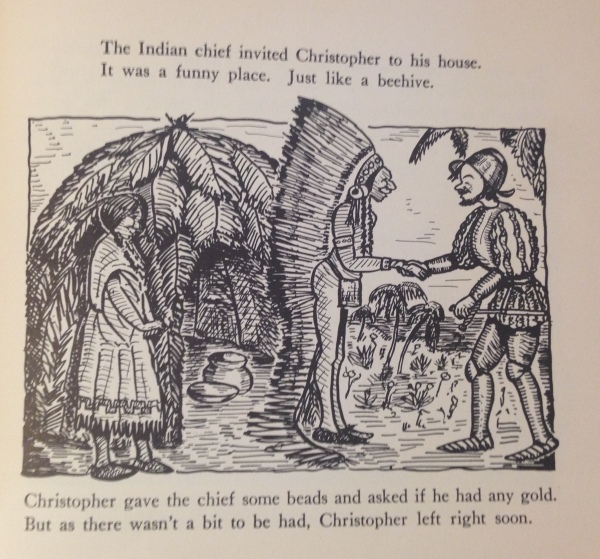
Artwork via DRAGOART
CHRISTIAN SCIENCE MONITOR: The biggest controversy clouding Columbus’s reputation is the destruction – many would say genocide – of American Indians to which his expeditions led. Gold had always been the goal of his conquests, and when he failed to deliver his promise of “great mines of gold and other metals,” slaves became the consolation prize. MORE
CHRISTOPHER COLUMBUS: “With fifty men we could subjugate them all and make them do whatever we want. Here there are so many of these slaves. […] They have no arms, and are without warlike instincts; they all go naked, and are so timid that a thousand would not stand before three of our men. So that they are good to be ordered about, to work and sow, and do all that may be necessary, and to build towns, and they should be taught to go about clothed and to adopt our customs.” MORE
CHRISTIAN SCIENCE MONITOR: “From his base on Haiti, Columbus sent expedition after expedition into the interior,” Howard Zinn wrote in his groundbreaking history text,  “A People’s History of the United States.” “They found no gold fields, but had to fill up the ships returning to Spain with some kind of dividend. In the year 1495, they went on a great slave raid, rounded up fifteen hundred Arawak men, women, and children, put them in pens guarded by Spaniards and dogs, then picked the five hundred best specimens to load onto ships. Of those five hundred, two hundred died en route. The rest arrived alive in Spain and were put up for sale by the archdeacon of the town.”
“A People’s History of the United States.” “They found no gold fields, but had to fill up the ships returning to Spain with some kind of dividend. In the year 1495, they went on a great slave raid, rounded up fifteen hundred Arawak men, women, and children, put them in pens guarded by Spaniards and dogs, then picked the five hundred best specimens to load onto ships. Of those five hundred, two hundred died en route. The rest arrived alive in Spain and were put up for sale by the archdeacon of the town.”
“Columbus later wrote,” Zinn quotes, “’Let us in the name of the Holy Trinity go on sending all the slaves that can be sold.’” Within 70 years of his arrival, of the hundreds of thousands of Arawak Indians on the Bahama Islands, only hundreds remained. Zinn writes: “A report of the year 1650 shows none of the original Arawaks or their descendants left on the island.” The account of Bartolomé de las Casas, a priest and contemporary of Columbus, affirms the atrocities of the conquest of the Indies. “While I was in Cuba, 7000 children died in three months,” las Casas wrote in his “History of the Indies,” as quoted by Zinn. “Some mothers even drowned their babies from sheer desperation … in this way, husbands died in the mines, wives died at work, and children died from lack of milk.” MORE
BOSTON.COM: The Cruise of Mr. Christopher Columbus: A Really Truly Story, by Sadyebeth & Anson Lowitz, was first published in 1932, and remained popular for decades. According to a 1932 review syndicated in newspapers across the country: “For children who love to be read to and for children just learning to read, there are probably no better books than the “Really Truly Stories” of Sadyebeth & Anson Lowitz.” The book was said to make “history human, understandable and absorbing to inquisitive youngsters and its amusing illustrations and pertinent text is sure to entertain parents almost as much as their youthful audience.” Co-authored by a husband and wife, the “Really Truly Stories” series  had sales exceeding a million copies by the late 1960s. MORE
had sales exceeding a million copies by the late 1960s. MORE
RELATED: A People’s History Of The United States By Howard Zinn
RELATED: Later in the 1960s, as a result of Zinn’s campaigning against the Vietnam War and his influence on Martin Luther King, Jr., the FBI designated Zinn a high security risk to the country, a category that allowed them to summarily arrest him if a state of emergency were to be declared.[68][70] The FBI memos also show that they were concerned with Zinn’s repeated criticism of the FBI for failing to protect blacks against white mob violence. MORE

